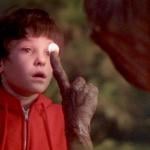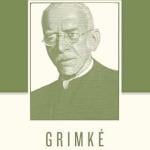It’s hard to believe Finding Neverland, a small, beautiful, almost perfect motion picture, possessed of a rare and gentle grace, is from the same director who brought us the heavy-handed, implausible, indulgent Monster’s Ball. Marc Forster has given us a big screen blessing with this softspoken, restrained, unsentimental movie.
Yes, I said “unsentimental,” and that’s where I part ways with some of the film’s critics.
Most American movies that employ the word “BELIEVE” in capital letters never get around to telling us WHAT to believe. They guide us to the understanding that our salvation lies in our own hands… that whatever we believe will come true if we just believe it hard enough.
That’s not what Finding Neverland says.
This movie, like the films of Terry Gilliam, acknowledges a dynamic with dangerous extremes — there is the figure of ruthless discipline, human arrogance, and heartless order, portrayed by Julie Christie in the character of Mrs. Emma du Marier, and there is the figure of imagination, whimsy, chaos, and childish recklessness, portrayed … or at least suggested … by Johnny Depp in the role of J.M. Barrie. But instead of glorifying Depp’s position and villainizing Christie’s position, the way Gilliam tends to do (Brazil, Baron Munchausen), by the end of the film we’ve come to see that they need each other.
Note: I cannot comment on the adherence of the film’s J.M. Barrie to the historical J.M. Barrie. I haven’t done my homework there. But as a story, this is a beautiful thing, and the fictional Barrie is as marvelous as any of Johnny Depp’s achievements, and perhaps his most delicate invention.
This Barrie’s devotion to childlike playfulness has cost him his marriage; he wasn’t responsible enough to do the hard work of making the marriage work, and the film affords his disenchanted (literally) wife, played with perfect intelligence and sadness by the elegant Radha Mitchell, with some measure of dignity. The film makes it clear that both participants have failed, and fortunately it avoids any predictable or violent confrontations. Mitchell and Depp carry off the complicated demise of their marriage beautifully in only a few short exchanges.
In the end, Barrie must learn to achieve a tenuous “marriage” of sorts with a bitter, pious woman, Mrs. du Maurier, for the good of the children, who need to learn how to mature and become responsible adults, even as he does what he can to help them keep their ability to “believe” alive. Mrs. du Maurier, likewise, is drawn from her staunch dislike of Barrie toward an appreciation of the value of imagination and childlike wonder. Most films would have either villainized her completely or else given her a complete redemption. For all of its exploration of fantasy, this film has an impressive grasp of the way people really change–incrementally.
This strikes me as one of the most responsible portrayals of the challenges facing people of faith that I’ve seen on the screen.
“People of faith”? But wait a minute. There’s no discussion of religion in this film at all. No suggestion that what we REALLY should believe in is Christ the Lord.
And thank goodness for that. The film is not about religion. It’s about the signposts that point the way toward true faith. It’s about the role of the imagination. Just as young children can believe in Santa Claus because of their innate sense that there is, indeed, a benevolent presence in the universe who watches over them, wants them to be good, and desires to bless them, so they believe that the laws of physics, order, and science are the last word in their experience. They know that these laws are porous, and through the cracks glimmers a light that suggests a larger reality, something bigger and more meaningful for which we are being prepared.
The Santa myth has value. It is, in a way, a pair of training wheels for faith. It cultivates their ability to believe in a world they cannot see, to investigate a mystery that doesn’t quite fit with the world they see around them every day.
Similarly, the story of Peter Pan captures the imaginations of the kid in all of us, connecting with that longing we all have to fly, to transcend the confinements and cruelty of this broken world. It kindles that inner fire, that sense of eternity written in our hearts by our Creator. It reminds us that innocence is valuable and threatened, that we should indeed cherish childhood and hold onto that irrational faith even in the face of death.
Ultimately, in the way we follow the progress of Sylvia Llewelyn-Davies from good health to the precipice of death, we are forced to reconcile our intuition that “death is not the end” with the fact that Sylvia is indeed going to be taken away from her children. Armed with such faith, we can indeed ask, “Oh death, where is they sting?”
Again, both stories are training wheels for True Faith. They cause us to exercise our belief in the invisible mysteries of God. They inspire us to believe that if we just take a step toward Him, He will take two steps toward us and lift us off our feet.
Eventually, though, the training wheels must come off. We must go to the place that these mythical signposts are directing us toward. If we just cling to these elementary exercises in belief, we remain rooted to one place, making no progress. We set ourselves up for such colossal disappointment that we end up spoiling both childhood and adulthood. Finding Neverland doesn’t take us there. How could it? These were not devout religious people. They were grownups who had not yet grasped the Next Level of faith. They are still following their intuitions, but at an elementary … or perhaps intermediate … level of semantics.
Think about Michael Jackson. (Just for a moment, as unpleasant as that might be.) This man, so injured by adults in his formative years, clings to the ideal of childhood so fiercely that he has bent its frame, broken it, and polluted it with a life of inappropriate behavior. His psychosis has damaged not only his own life, but, all evidence suggests, the lives of young people he has “welcomed” into his own personal Neverland. He wants to paralyze himself in a state where he cannot grow, where he can believe that he is in control of his own universe. He has not surrendered himself to the larger mystery, or, as Barrie did, accepted the kind of adult responsibilities that makes childhood possible for children.
Mr. Barrie, so beautifully portrayed by Johnny Depp, may or may not be an accurate portrayal of the real man. But the Barrie in this film is a man of deep sadness because, like Michael Jackson, he wants to lose himself in childish whimsy and refuse to grow up. But he also recognizes that adulthood is necessary, that growing up is an honorable thing in spite of its cost. When he notices that one of the children has, in a moment, become a man, it is not a moment of despair, but a moment of deepening understanding, when the boy is suddenly willing to make a sacrifice in order to show kindness to his ailing mother.
The finale of the film is so risky, and so perfect, that it takes my breath away. Children and grownups alike are enchanted by a glimpse of Neverland, a vision of Eden, both lost in the past, and waiting for us in the future. It is, indeed, just a fairy tale. But it is also a signpost, a metaphor for that thing we all know is possible—a redemption, a restoration to perfect innocence, a blessing waiting for all of us. And instead of belaboring any exhortation that we must deny adulthood and be reckless children, the film instead encourages us to cling to that ability to believe in deeper mysteries even as we carry out the duties of adulthood. It coaxes us to continue being assured of things hoped for, believing in things unseen, no matter what disspiriting realities we encounter in this world.
When we were children, we learned our multiplication tables. When we were teenagers, we were introduced to the idea of algebra, and suddenly we came to discover a much deeper, more mysterious world of invisible principles that make those multiplication tables work and that can even subvert them and change them. Similarly, when we become grownups, we put away the “childish things” … those training wheels for faith. That doesn’t mean we condemn them. That doesn’t mean we ignore them. We still need those elementary expressions. We still need our multiplication tables. They are a useful language of faith in everyday life. But we also need to understand that, like any language, the terms are merely illustrations. They are merely signifiers of a mystery, unable to grasp it in its entirety. They refer us to a vast, immeasurable truth. They point the way to the mystery of Jesus Christ, who showed us that the sting of death can be taken away when we follow him through death into everlasting life.
Christ, the Living Word, the Signifier who was not just a fairy tale, but bridged the distance between imagination and physical reality, who showed us that what we long for is actually possible, if we just believe in him.











